HMS Dauntless has completed a casualty evacuation exercise with the medical team from HMS Prince of Wales, testing the UK Carrier Strike Group’s ability to respond to medical emergencies during Operation Highmast.
The drill, known as CASEVAC, involved the rapid transfer of a simulated casualty between vessels and treatment aboard the carrier by the embarked medical team. Unlike medical evacuation (MEDEVAC), which typically uses dedicated medical transport, CASEVAC focuses on urgent removal using whatever assets are available. The emphasis is on speed and proximity rather than full medical capability.
The footage was captured by LPhot Walton.
🛳️ @HMSDauntless carried out a casualty evacuation drill with @HMSPWLS during #OperationHighmast, testing the Carrier Strike Group’s ability to respond to medical emergencies at sea. #CSG25 pic.twitter.com/uv36tQO5Wl
— UK Defence Journal (@UKDefJournal) August 1, 2025
The exercise was designed to test coordination, response times, and communication across the task group. It reflects the broader mission of Operation Highmast, which is not limited to combat readiness but also includes humanitarian and medical preparedness.
Operation Highmast is the Royal Navy’s headline deployment of 2025, involving over 4,500 British personnel and a dozen partner nations. Led by HMS Prince of Wales, the Carrier Strike Group is operating across the Mediterranean, Middle East, and Indo-Pacific regions, conducting joint exercises and strategic port visits.
The at-sea CASEVAC training underlines the need for high readiness across all scenarios. Whether responding to hostile action or an onboard emergency, the task group must be able to move and treat personnel quickly, even in austere or contested environments.
Exercises like this ensure that crews are not only trained for warfare but are also prepared to safeguard the health and lives of those serving on deployment.
The ship herself
HMS Dauntless is a 152.3-metre-long guided missile destroyer with a displacement of between 8,000 and 8,400 tonnes. Designed for fleet-wide air defence, she is powered by two Rolls-Royce WR-21 gas turbines and three MTU diesel generators, driving two Converteam electric motors for a top speed exceeding 30 knots. She has a range of over 7,000 nautical miles at 18 knots and accommodates a standard crew of 191, with berths for up to 235.
Her primary sensors include the SAMPSON multi-function radar, the S1850M long-range air surveillance radar, and a suite of navigation and targeting systems. She is armed with the Sea Viper air-defence system, which uses the Sylver A50 vertical launch system to fire Aster 15 and Aster 30 missiles, with the latter being upgraded for ballistic missile defence under the Sea Viper Evolution programme.
In addition to her missile systems, HMS Dauntless carries a 4.5-inch Mark 8 naval gun, two 30mm DS30B guns, two Phalanx close-in weapon systems, six 7.62mm general purpose machine guns, and other small arms. She is also capable of embarking a Merlin or Wildcat helicopter, which may be armed with Martlet, Sea Venom, or anti-submarine torpedoes. Aviation facilities include a flight deck and enclosed hangar.
Future enhancements to the class include the integration of Sea Ceptor missiles to replace the Aster 15, and the planned installation of the Naval Strike Missile to restore a surface strike capability lost with the retirement of Harpoon in 2023. HMS Dauntless’s contribution to Operation Highmast reflects the Type 45’s central role in protecting high-value assets, including the carrier herself, and providing long-range air defence for joint maritime task groups.



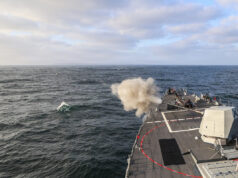
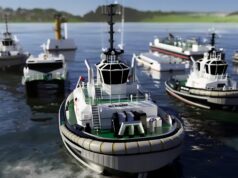
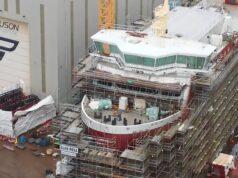
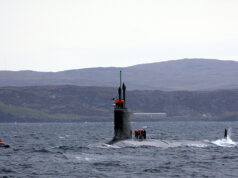
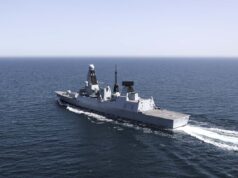


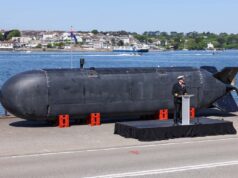
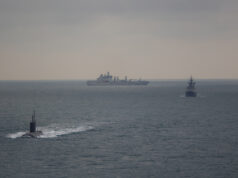
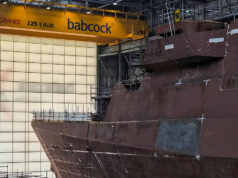

So If I’m correctly seeing a Merlin in the picture then a Merlin has indeed been working with (if not from) a T45 after all.
Hmmm, I remember previous arguments on certain sites where T45 was not Merlin capable. Interesting.
“In more ways than one”.
Stock photo or related, though.
My initial thought on reading the headline was whether they had used a Drone. I followed with interest a few months ago a convo here between our SME Jonathan and Dern of the drawbacks of using a Drone to move a casualty. That was in a battlefield scenario mind.
Hmmm. I’m unsure.
By my understanding, Lynx Wildcat Small Ships Flights deploy to T45 and non tailed T23s.
Merlin has a Carrier dedicated Squadron while the other Merlin Sqn has Small Ships Flights for deployed tailed T23s.
Merlin might well be able to land on a T45s deck ( no idea? ) but not actually operate from it using the hanger?
With only 30, is it a good use of assets? Could a Wildcat do? Or a Merlin HC2?
T45 was designed for and still described as merlin capable but no-one has really ever been able to give examples of this. There was an argument/discussion on a site (not sure which) a while back that descended into the usual type of farcical slanging match typically seen on these sites when posters misread the original question.
Posting a Library Picture (it’s not labelled as such) probably doesn’t help with clarity.
I did see mention that a Merlin was working with a T45 a while back, can’t recall clearly but It might have been on this deployment ?
A Wasp was good enough once.
Ahhh, the Wasp!!!!
Just noticed it says T45 is able to embark Merlins in the article. Second to last Paragraph.
Wasp, Buccaneer, Vixen, Gannet, Phantom, would you require a tissue ? 😁
For Buccaneer.
Please.
Why wouldn’t it be Merlin capable, especially if by that you just mean land one and evacuate a casualty? They’ve even managed to lilypad a Merlin on a River OPV. The hangar on the destroyer is big enough for two Wildcats, so easily big enough for a single Merlin. In what way would it be incapable?
Then, a quick browse will show videos of Merlins landing on the T45s (including Crowsnest), and a description of the first 12 week deployment of a Merlin on HMS Defender on the Fleet ASir arm officers web site, back in 2013. There’s so much evidence I don’t understand the naysayers. Are they flat earthers by any chance?
Crows nest is a absolute joke…something better needs to be done. Yesterday
hopefully the scenario will be a rare one. teamwork and coordination skills have to be perfect in 1982 the evacuation from the field hospital to QE2 and Canberra were found wanting. and the fine tuning for this kind of exercise stems from then.